Kalyanotsava is the divine wedding ceremony of the Supreme Lord Sri Krishna with His consorts Rukmini and Satyabhama.
Do not miss the opportunity to participate online in the festival.
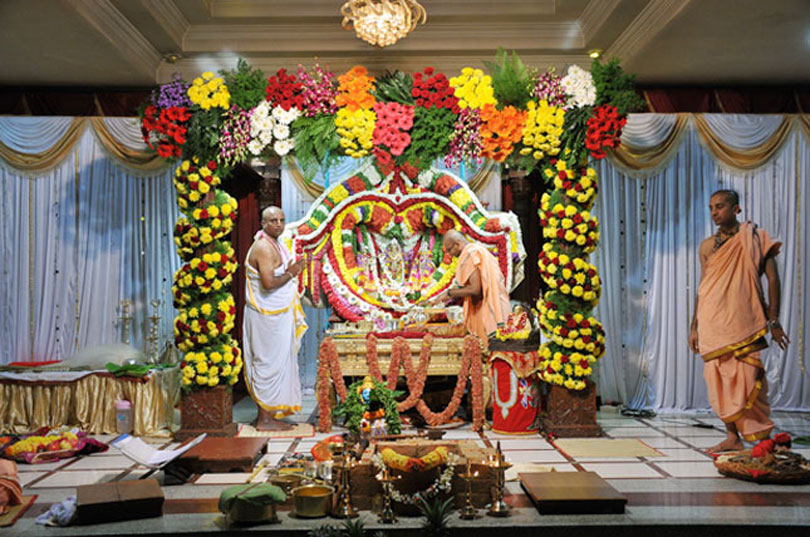
Krishna’s marriage with Rukmini, the daughter of Bhishmakaraja, the king of Vidarbha is described in the 53rd and 54th chapters of the tenth canto of Srimad Bhagavatam. Rukmini wanted to marry Krishna, but her brother Rukmi finalized her marriage with Sisupala. Rukmini wrote a letter to Krishna asking Him to kidnap her and sent it through a Brahmana. This sort of marriage, in which the girl is kidnapped by force, is known as rakshasa and is common among Kshatriyas. Krishna and Balarama went to Kundinapura, the capital city of Vidarbha. Krishna kidnapped Rukmini, when she came out of the palace to visit the temple of goddess Durga. Krishna and Balarama defeated all the princes who tried to stop Them and brought Rukmini to the city of Dvaraka where the marriage happened according to the Vedic ritualistic principles.

His marriage with Satyabhama, the daughter of King Satrajit is described in the 56th chapter of the tenth canto of Srimad Bhagavatam. King Satrajit was a great devotee of the Sun god. Initially there was a misunderstanding between him and the Yadu dynasty. But later the matter was settled and he voluntarily gave his daughter Satyabhama to Krishna.
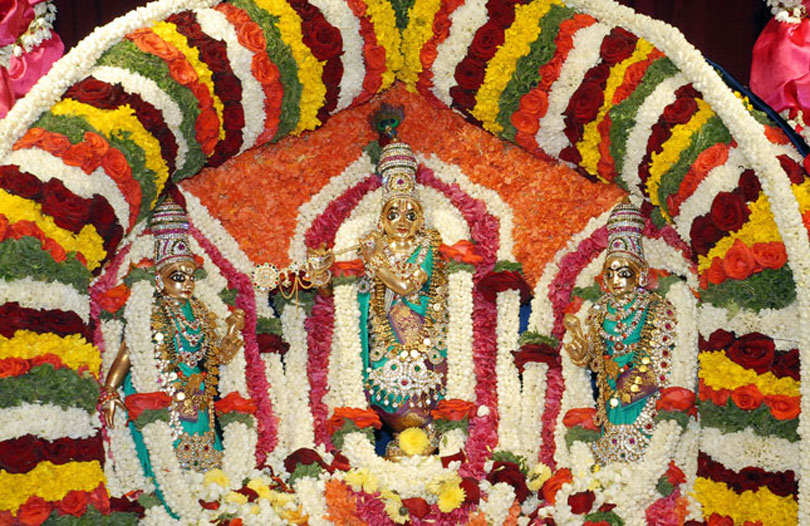
The marriage ceremony is conducted according to Vedic rituals. The rituals begin with Vishvakasena Aradhana, the worship of Sri Vishvakasena, the commander-in-chief of the army of Lord Vishnu, who eliminates all obstacles. Devotees pray to Vishvakasena and then take the sankalpa for performing the divine marriage of Krishna with Rukmini and Satyabhama. This is followed by Sudarshana Puja and Punyahavachana (purifying the place and the paraphernalia used for the ceremony by sprinkling them with water sanctified by chanting special mantras).
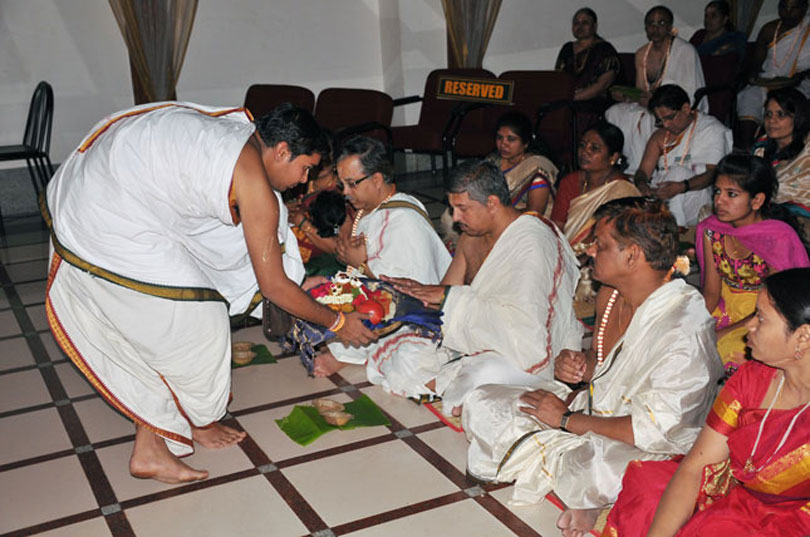
Nishchitarta is one of the ceremonies where tambulas are exchanged between the families of bride and the bridegroom. Both the families accept the match and exchange gifts.
Another important ceremony is Pratisara Bandana (also known as Raksha Bandana), the tying of the sacred thread (a protective amulet) on the hands of the brides (Rukmini, Satyabhama) and the bridegroom (Sri Krishna). Sri Vasuki, the divine serpent and Sudarshana are invoked on the sacred thread. In the Bhagavad-gita, Krishna says: sarpanam asmi vasuki: of serpents I am Vasuki. Vasuki was also used as a rope when the devatas and daityas churned the ocean of milk using the Mandara Mountain as the churning rod.
Yajnopavida Dharana or the sacred thread ceremony is performed for the Lord signifying that He is now entering the Grihasta Ashrama. Gotra Pravarana is the next ceremony where the priests of both sides read out the lineage of the brides and bridegroom. Traditionally it is forbidden to marry a boy or girl from the same gotra.
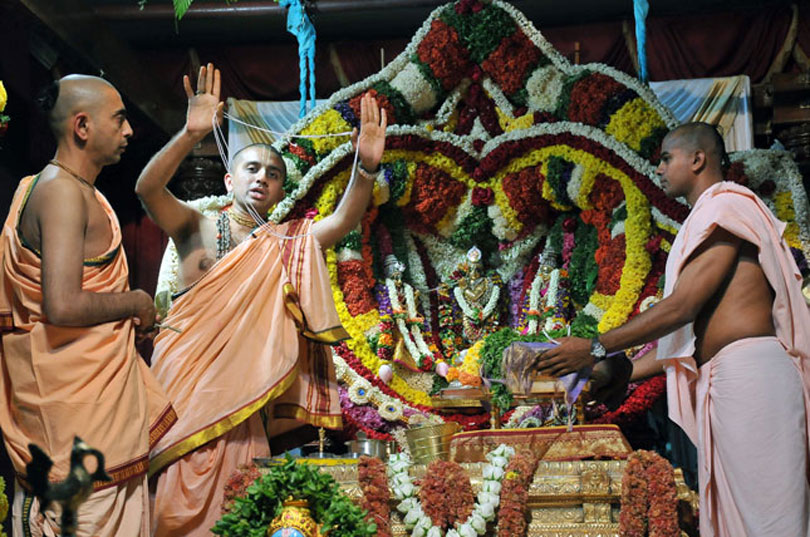
Pada Prakshalana, or washing the lotus feet of the Supreme Lord, is performed by the priests. The culmination of the wedding ceremony is Kanya Dana where the father of the bride makes a statement of intent by mentioning the date, time, place and the five astrological factors (panchanga) to give away his daughter in charity to the bridegroom (Lord Sri Krishna) for the purpose of begetting offspring and lead a life of prosperity in accordance with religious principles and to be a companion in executing the social duties. This is followed by Mangalya Dharana, the tying of the mangala sutra around the necks of the brides. The priests and all the guests sprinkle akshata (Akshataropana) on the Deities of Sri Sri Krishna Rukmini Satyabhama. An elaborate homa is performed followed by naivedya (food offering) and arati (lamp offering).
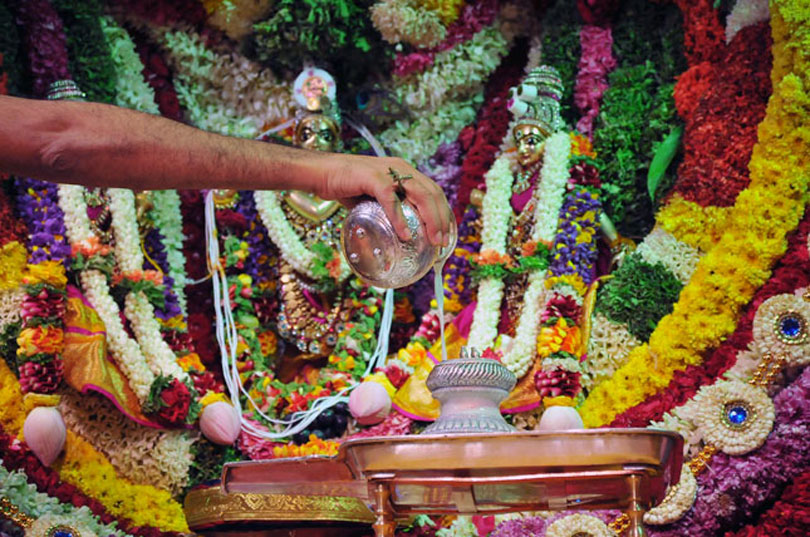
Related Links: Sri Brahmotsava | Brahmotsava Schedule | Kalyanotsava | The Eve of Brahmotsava | Brahmotsava Highlights | Sri Brahmotsava Sevas

